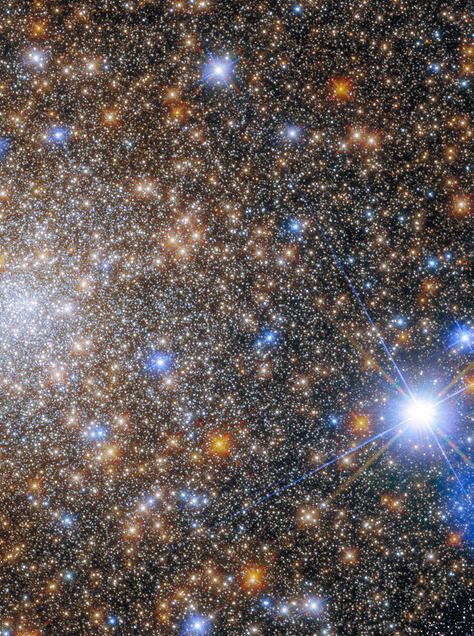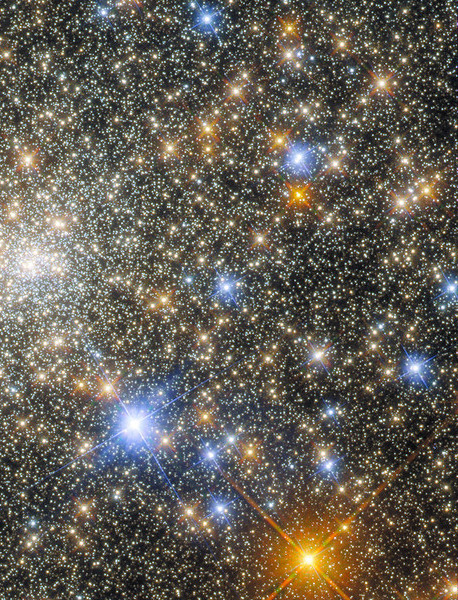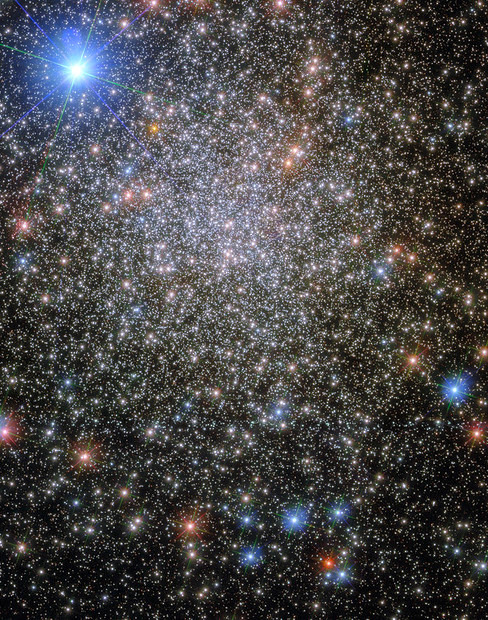Moon's Mare Imbrium L Manuel Huss

Moon's Mare Imbrium l Manuel Huss
More Posts from Ad-astra-affecte-spe and Others

Into the Cosmic Heart, IC 1850 © Aleix Roig

Earth as seen through Saturn's ring(Cassini)

JWST Breaks New Ground - Twice
Between the orbit of Jupiter and Saturn lies a small 151Km wide asteroid/minor planet called Chariklo. This left over from our early solar system hasn't been imaged before, and was too small for JWST to image too, however, the JWST team were waiting for an opportunity to do some science.
Because of it's size, the only way they could do this was if a star passed directly behind the asteroid from the location of JWST, so it was put on a watch list, and in October, this is exactly what happened.
This is the first time any telescope has been able to see an object it wouldn't ordinarily be able to image, simply due to a chance occultation, so marks a first and interesting method for looking at some of these far off objects.

The asteroid happens also happens to sport a small ring of debris, and as the star didn't quite make a direct occultation, it did pass through the debris rings, being picked up twice as it passed through.

But what really was impressive was the second bit of data gathered, as the occultation occurred JWST was able to record the composition, detecting water ice.
Up until now, it had been assumed that the asteroid would have a significant water ice component, but this is the first time anybody has been able to take some real data from it.
Objects like Chariklo tell us so much about the early solar system, how Earth got it's water, and what other systems and exoplanets are likely made from.

Earth, which is about 898 million miles (1.44 billion kilometers) away in this image, captured by NASA's Cassini spacecraft 🚀






Saturn in near-infrared
this morning NASA abandoned their mars rover Opportunity (aka Oppy) because it (she) got hit by a storm on Mars and it knocked her camera and wheels out and her last words to the team were “my battery is low and it is getting cold”. I know she’s a machine but I’m devastated. Oppy is the one who discovered water on Mars. RIP oppy ily space baby

2023 September 28
The Deep Lagoon Image Credit & Copyright: Josep Drudis, Christian Sasse
Explanation: Ridges of glowing interstellar gas and dark dust clouds inhabit the turbulent, cosmic depths of the Lagoon Nebula. Also known as M8, The bright star forming region is about 5,000 light-years distant. It makes for a popular stop on telescopic tours of the constellation Sagittarius toward the center of our Milky Way Galaxy. Dominated by the telltale red emission of ionized hydrogen atoms recombining with stripped electrons, this deep telescopic view of the Lagoon’s central reaches is about 40 light-years across. The bright hourglass shape near the center of the frame is gas ionized and sculpted by energetic radiation and extreme stellar winds from a massive young star.
∞ Source: apod.nasa.gov/apod/ap230928.html
-
 parambolicalalande reblogged this · 2 weeks ago
parambolicalalande reblogged this · 2 weeks ago -
 jandara946 liked this · 3 months ago
jandara946 liked this · 3 months ago -
 unspokenmantra reblogged this · 4 months ago
unspokenmantra reblogged this · 4 months ago -
 unspokenmantra liked this · 4 months ago
unspokenmantra liked this · 4 months ago -
 montainstravelsandcie liked this · 6 months ago
montainstravelsandcie liked this · 6 months ago -
 sahraouiat liked this · 7 months ago
sahraouiat liked this · 7 months ago -
 private-eye-on-you liked this · 9 months ago
private-eye-on-you liked this · 9 months ago -
 nightndaydreaming reblogged this · 11 months ago
nightndaydreaming reblogged this · 11 months ago -
 neembu liked this · 1 year ago
neembu liked this · 1 year ago -
 mynameiseosson reblogged this · 1 year ago
mynameiseosson reblogged this · 1 year ago -
 holoprisms liked this · 1 year ago
holoprisms liked this · 1 year ago -
 number48 reblogged this · 1 year ago
number48 reblogged this · 1 year ago -
 lvrbuoy reblogged this · 1 year ago
lvrbuoy reblogged this · 1 year ago -
 lilaceas reblogged this · 1 year ago
lilaceas reblogged this · 1 year ago -
 bi-hans liked this · 1 year ago
bi-hans liked this · 1 year ago -
 melancholia-sutra liked this · 1 year ago
melancholia-sutra liked this · 1 year ago -
 americanerdboy liked this · 1 year ago
americanerdboy liked this · 1 year ago -
 messier47 reblogged this · 1 year ago
messier47 reblogged this · 1 year ago -
 mynameiseosson liked this · 1 year ago
mynameiseosson liked this · 1 year ago -
 emptyanddark reblogged this · 1 year ago
emptyanddark reblogged this · 1 year ago -
 timothysaurus liked this · 1 year ago
timothysaurus liked this · 1 year ago -
 fairyxangel333 reblogged this · 1 year ago
fairyxangel333 reblogged this · 1 year ago -
 kendigitamer-666 reblogged this · 1 year ago
kendigitamer-666 reblogged this · 1 year ago -
 iveslorran liked this · 1 year ago
iveslorran liked this · 1 year ago -
 emaadsidiki liked this · 1 year ago
emaadsidiki liked this · 1 year ago -
 livingatthespeedoflust-posts liked this · 1 year ago
livingatthespeedoflust-posts liked this · 1 year ago -
 brahman-god-oceanofloveagain liked this · 1 year ago
brahman-god-oceanofloveagain liked this · 1 year ago -
 jawbones4u reblogged this · 1 year ago
jawbones4u reblogged this · 1 year ago -
 jawbones4u liked this · 1 year ago
jawbones4u liked this · 1 year ago -
 mysticallion reblogged this · 1 year ago
mysticallion reblogged this · 1 year ago -
 amused-itself-to-death reblogged this · 1 year ago
amused-itself-to-death reblogged this · 1 year ago -
 zenethemoon liked this · 1 year ago
zenethemoon liked this · 1 year ago -
 kurioi01 liked this · 1 year ago
kurioi01 liked this · 1 year ago -
 inpraiseofpmg liked this · 1 year ago
inpraiseofpmg liked this · 1 year ago -
 ends-2-beginnings liked this · 1 year ago
ends-2-beginnings liked this · 1 year ago -
 thelovelymazza6 reblogged this · 1 year ago
thelovelymazza6 reblogged this · 1 year ago -
 thelovelymazza6 liked this · 1 year ago
thelovelymazza6 liked this · 1 year ago -
 platre-egouttoir reblogged this · 1 year ago
platre-egouttoir reblogged this · 1 year ago -
 oldsoul-man liked this · 1 year ago
oldsoul-man liked this · 1 year ago -
 sailboat119 liked this · 1 year ago
sailboat119 liked this · 1 year ago -
 iron-cretin reblogged this · 1 year ago
iron-cretin reblogged this · 1 year ago -
 chiefbouquetphantomstuff liked this · 1 year ago
chiefbouquetphantomstuff liked this · 1 year ago -
 txjuan reblogged this · 1 year ago
txjuan reblogged this · 1 year ago -
 txjuan liked this · 1 year ago
txjuan liked this · 1 year ago -
 fad1d reblogged this · 1 year ago
fad1d reblogged this · 1 year ago

★•Astronomy, Physics, and Aerospace•★ Original and Reblogged Content curated by a NASA Solar System Ambassador
204 posts








































